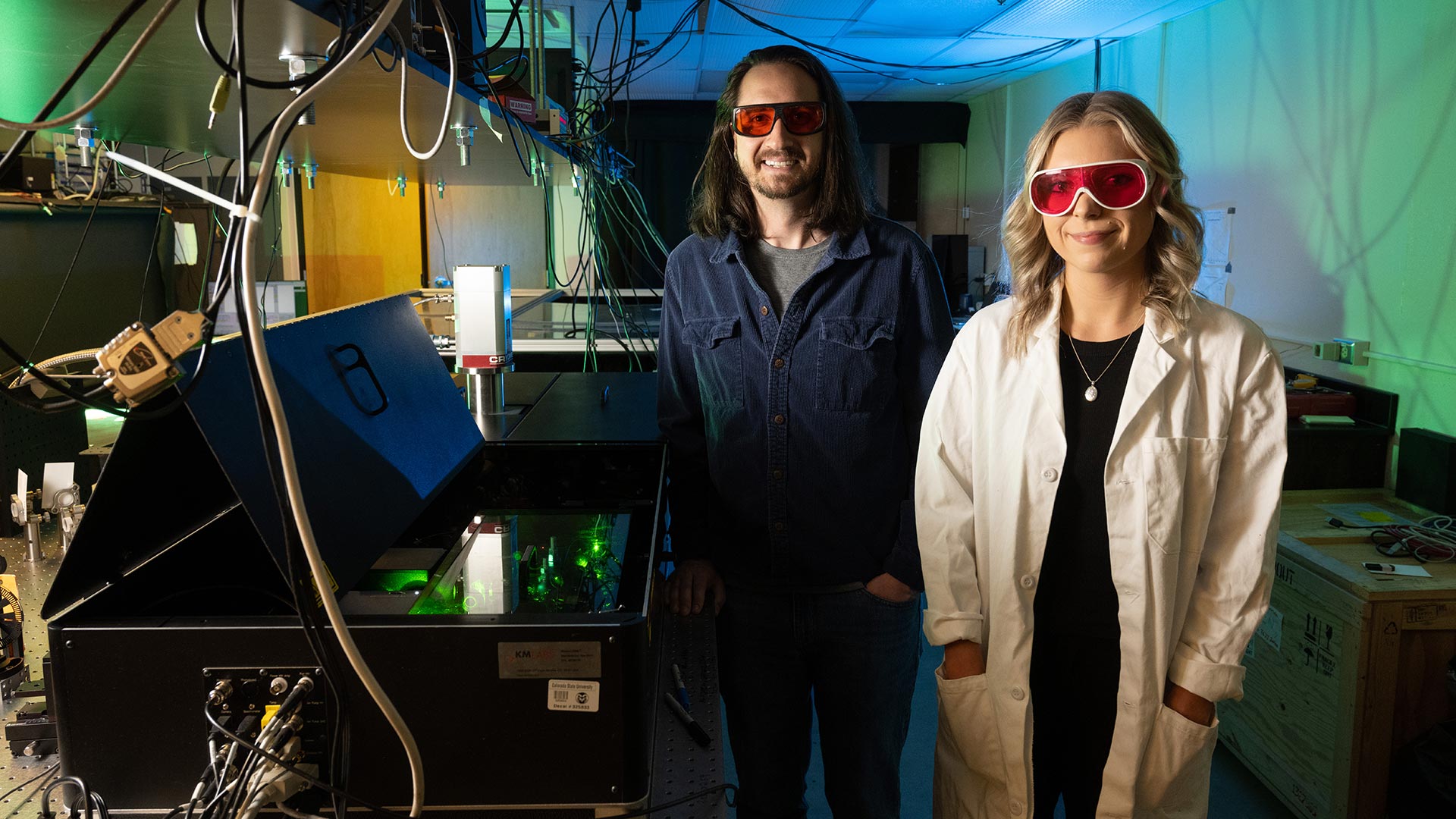
New Ultrathin Material for Doubling Solar Cell Efficiency: Solar power technologies, which use solar cells to convert sunlight to electricity or storable fuels, are gaining momentum in a world looking beyond fossil fuels for its energy needs.
The dark bluish solar panels that dot rooftops and open fields today are typically made from silicon, a well-tested semiconductor material. Silicon photovoltaic technology has its limitations, though, losing up to 40% of the energy it collects from sunlight in the form of heat waste. Researchers at Colorado State University are studying radical new ways to improve solar power and provide more options for the industry to explore.
CSU chemists are proposing to make solar cells using not silicon, but an abundantly available natural material called molybdenum disulfide. Using a creative combination of photoelectrochemical and spectroscopic techniques, the researchers conducted a series of experiments showing that extremely thin films of molybdenum disulfide display unprecedented charge carrier properties that could someday drastically improve solar technologies.
The experiments were led by chemistry Ph.D. student Rachelle Austin and postdoctoral researcher Yusef Farah. Austin works jointly in the labs of Justin Sambur, associate professor in the Department of Chemistry, and Amber Krummel, associate professor in the same department. Farah is a former Ph.D. student in Krummel’s lab. Their work is published in Proceedings of the National Academy of Sciences.
New Ultrathin Material for Doubling Solar Cell Efficiency: The collaboration brought together Sambur’s expertise in solar energy conversion using nanoscale materials, and Krummel’s expertise in ultrafast laser spectroscopy, for understanding how different materials are structured and how they behave. Sambur’s lab had become interested in molybdenum sulfide as a possible alternative solar material based on preliminary data on its light absorption capabilities even when only three atoms thick, explained Austin.
That’s when they turned to Krummel, whose lab contains a state-of-the-art ultrafast pump-probe transient absorption spectrometer that can very precisely measure the sequential energy states of individual electrons as they are excited with a laser pulse. Experiments using this special instrument can provide snapshots of how charges flow in a system. Austin created a photoelectrochemical cell using a single atomic layer of molybdenum sulfide, and she and Farah used the pump-probe laser to track the cooling of electrons as they moved through the material.
What they found was astoundingly efficient light-to-energy conversion. More importantly, the laser spectroscopy experiments enabled them to show why this efficient conversion was possible.
They found that the material was so good at converting light to energy because its crystal structure allows it to extract and exploit the energy of so-called hot carriers, which are highly energetic electrons that are briefly excited from their ground states when hit with enough visible light. Austin and Farah found that in their photoelectrochemical cell, the energy from these hot carriers was immediately converted into photocurrent, rather than lost as heat. This hot carrier extraction phenomenon is not present in conventional silicon solar cells.
“This work paves the way for knowing how to design reactors that contain these nanoscale materials for efficient and large-scale hydrogen production,” Sambur said.
The project was a collaboration with Professor Andrés Montoya-Castillo and Dr. Thomas Sayer of University of Colorado Boulder, who contributed theoretical chemistry and computational modeling to help explain and verify the experimental data.
“The discovery required a ‘team science’ approach that brought together many different types of expertise, in computational, analytical and physical chemistry,” Krummel said.
The results give scientists and engineers an avenue of inquiry to explore new approaches to tomorrow’s solar energy technologies. The work was supported by the U.S. Department of Energy, Office of Basic Energy Sciences.
New Ultrathin Material for Doubling Solar Cell Efficiency: Original Article
The vulnerability of a promising two-dimensional semiconductor to air, and discover new catalyst
Paper-Thin Solar Cell Can Turn any Surface into a Power Source
Japanese researchers develop ultrathin, highly elastic skin display










